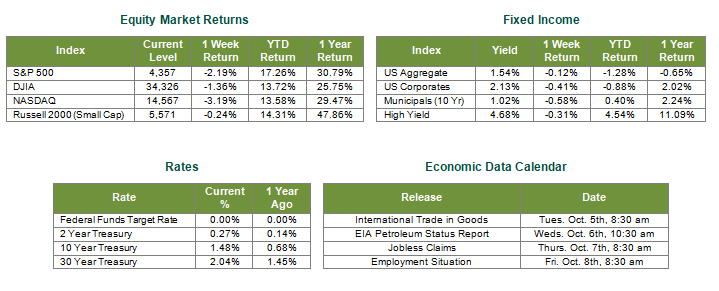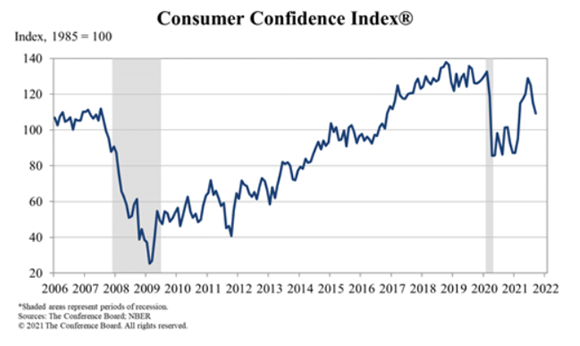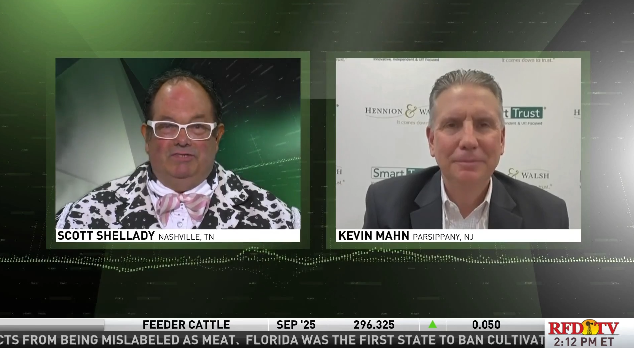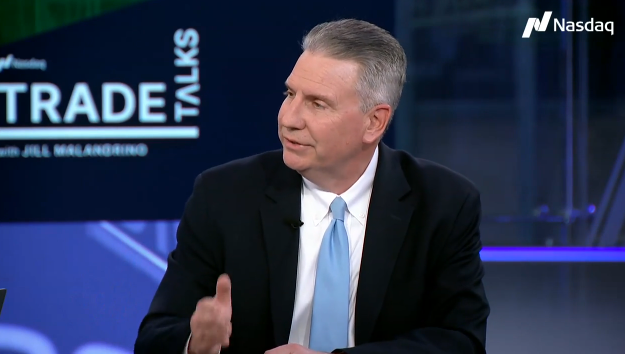
Last Week’s Markets in Review: Investors Await Outcomes of Key Fiscal Policy Votes

Global equity markets finished lower for the week. In the U.S., the S&P 500 Index closed the week at a level of 4,357, representing a loss of 2.19%, while the Russell Midcap Index moved 1.92% lower last week. Meanwhile, the Russell 2000 Index, a measure of the Nation’s smallest publicly traded firms, returned -0.24% over the week. International equity performance were also lower as developed, and emerging markets returned -3.11% and -1.40%, respectively. Finally, the 10-year U.S. Treasury yield moved higher, closing the week at 1.48%.
This week’s commentary will review numerous events and reports that made the last week of the third quarter busy and eventful, with most of the action involving negotiations on Capitol Hill. On Tuesday, the Conference Board released its Consumer Confidence Index and other information from its monthly survey. The index value was 109.3 for September, down from 115.2 in August. This marked the third straight monthly decline and also a seven-month low for the index. The Senior Director of Economic Indicators at the Conference Board, Lynn Franco, stated, “These back-to-back declines suggest consumers have grown cautious and are likely to curtail spending going forward.” However, it is essential to note that Consumer Confidence reports are a lagging economic indicator, telling us what has happened and not necessarily what will happen. In addition, a reading above 100 generally indicates that ‘consumers’ confidence towards the future economic situation is favorable.

Wednesday’s news involved Federal Reserve Chairman Powell’s address to the U.S. Senate. This appearance follows the September FOMC meeting, which occurred during the week of September 20 and led to yields on treasury bonds moving higher. It was not an easy visit to Capitol Hill for the Fed Chair as Senator Warren of Massachusetts described Powell as “a dangerous man” and vowed to oppose his renomination in January. It should be noted that Senator Warren’s comments and criticism did not focus on the Fed’s monetary policy but rather on its accommodative regulatory actions concerning the Nation’s financial institutions.
Throughout the week, Congress dealt with several fiscal policy issues that must be resolved if the economy continues to recover from the COVID-19 shutdowns. Faced with a potential government shutdown on Thursday, Congress passed a short-term funding package. This short-term compromise will fund the Federal Government through December 3, 2021. Congress continues to debate and negotiate several other critical issues that include, but are not limited, to the following:
1. The Debt Ceiling – To avoid a default, Congress must increase or suspend the debt ceiling by October 18.
2. A Longer-Term Funding Package – The Biden Administration and the majority of Congressional Democrats have proposed a $3.5 Trillion budget reconciliation package. The package has been described as the centerpiece of the Biden Administration’s domestic agenda. Republicans in Congress and a few key Democratic Senators would prefer a much smaller spending package.
3. The Infrastructure Bill – The $1 Trillion Bill that passed the Senate in August has been on the desk of House leadership for a month and was the focus of much discussion on Thursday. A House vote has been delayed in a continued effort to pass both a budget reconciliation package and the Infrastructure Bill at the same time.
We will continue to monitor both fiscal and monetary policy in the coming weeks. We believe that both forms of policy may continue to cause market volatility. The effects of fiscal and monetary policy, and other geopolitical developments, are important factors for investors to consider when managing their investment portfolios. As a result, we encourage investors to work with experienced financial professionals to help build and manage the asset allocations within their portfolios consistent with their objectives, timeframe, and tolerance for risk.
Best wishes for the week ahead!
Consumer Confidence Index data is sourced from the Conference Board. Equity Market and Fixed Income returns are from JP Morgan as of 10/1/21. Rates and Economic Calendar Data from Bloomberg as of 10/1/21. International developed markets measured by the MSCI EAFE Index, emerging markets measured by the MSCI EM Index, U.S. Large Cap defined by the S&P 500. Sector performance is measured using the GICS methodology.
Disclosures: Past performance does not guarantee future results. We have taken this information from sources that we believe to be reliable and accurate. Hennion and Walsh cannot guarantee the accuracy of said information and cannot be held liable. You cannot invest directly in an index. Diversification can help mitigate the risk and volatility in your portfolio but does not ensure a profit or guarantee against a loss.
Diversification can help mitigate the risk and volatility in your portfolio but does not ensure a profit or guarantee against loss.
Investing in commodities is not suitable for all investors. Exposure to the commodities markets may subject an investment to greater share price volatility than an investment in traditional equity or debt securities. Investments in commodities may be affected by changes in overall market movements, commodity index volatility, changes in interest rates or factors affecting a particular industry or commodity.
Products that invest in commodities may employ more complex strategies which may expose investors to additional risks.
Investing in fixed income securities involves certain risks such as market risk if sold prior to maturity and credit risk especially if investing in high yield bonds, which have lower ratings and are subject to greater volatility. All fixed income investments may be worth less than the original cost upon redemption or maturity. Bond Prices fluctuate inversely to changes in interest rates. Therefore, a general rise in interest rates can result in the decline of the value of your investment.
Definitions
MSCI- EAFE: The Morgan Stanley Capital International Europe, Australasia and Far East Index, a free float-adjusted market capitalization index that is designed to measure developed-market equity performance, excluding the United States and Canada.
MSCI-Emerging Markets: The Morgan Stanley Capital International Emerging Market Index, is a free float-adjusted market capitalization index that is designed to measure the performance of global emerging markets of about 25 emerging economies.
Russell 3000: The Russell 3000 measures the performance of the 3000 largest US companies based on total market capitalization and represents about 98% of the investible US Equity market.
ML BOFA US Corp Mstr [Merill Lynch US Corporate Master]: The Merrill Lynch Corporate Master Market Index is a statistical composite tracking the performance of the entire US corporate bond market over time.
ML Muni Master [Merill Lynch US Corporate Master]: The Merrill Lynch Municipal Bond Master Index is a broad measure of the municipal fixed income market.
Investors cannot directly purchase any index.
LIBOR, London Interbank Offered Rate, is the rate of interest at which banks offer to lend money to one another in the wholesale money markets in London.
The Dow Jones Industrial Average is an unweighted index of 30 “blue-chip” industrial U.S. stocks.
The S&P Midcap 400 Index is a capitalization-weighted index measuring the performance of the mid-range sector of the U.S. stock market, and represents approximately 7% of the total market value of U.S. equities. Companies in the Index fall between S&P 500 Index and the S&P SmallCap 600 Index in size: between $1-4 billion.
DJ Equity REIT Index represents all publicly traded real estate investment trusts in the Dow Jones U.S. stock universe classified as Equity REITs according to the S&P Dow Jones Indices REIT Industry Classification Hierarchy. These companies are REITs that primarily own and operate income-producing real estate.



